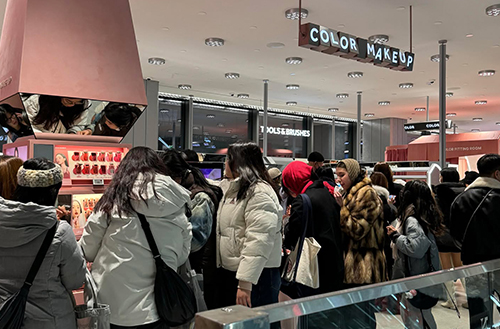
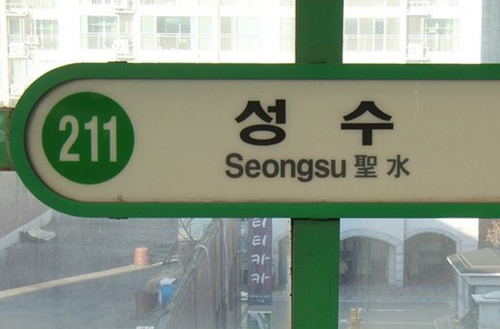
-
-
- 메일 공유
-
https://stories.amorepacific.com/en/amorestories-the-pop-up-sanctuary-the-evolution-of-the-seongsu-district
The Pop-Up Sanctuary: The Evolution of the Seongsu District
Finding the True Pop-Ups In An Era Inundated with Pop-ups #1

Columnist
Shin Hee-sun Restore Business Team

Editor’s note
In a golden age where a hundred pop-ups sprout weekly, we delve into what makes a pop-up genuinely work. Gone are the days when merely opening a pop-up was enough to spark novelty. What kind of pop-up excites the Millennials, Gen Z, and Gen Alpha? On what basis should the success of a pop-up be defined? What’s the secret behind the popularity of certain pop-ups? A staff member managing our flagship store, Amorepacific Seongsu, analyses the content of today’s pop-ups, flagship stores, and offline retail trends.
#INTRO
Hello, I’m Shin Hee-sun from the Restore Business Team, writing the staff column for 2024. Our team manages the Amorepacific Seongsu flagship store. After years in the field, I’ve accumulated a fair share of personal insights. Thus, I decided to start a series of columns on pop-ups, commercial districts, and offline retail trends. Today, as an opener, I want to delve into Seongsu-dong, now a scorchingly famous district fondly nicknamed the sanctuary of pop-ups. Its history is closely linked with the current trends in pop-up stores.
1 The Beginning of Seongsu’s Commercial District, The Industrial Café Daelim Warehouse

The screen that appears when searching for pop-up stores on Naver Maps. In reality, there are even more
/ Source: Naver Maps
Seongsu-dong, rapidly emerging as one of the top three commercial districts for the Millennials and Gen Z alongside Apgujeong Rodeo and Yongsan, is indeed a pop-up sanctuary. At any given moment, Seongsu-dong is alive with an average of fifty pop-ups. Yet, when we were bustling about near Seongsu Station to open Amorepacific Seongsu around 2019, it was hard to imagine that each and every block of the district would be packed with pop-up stores.
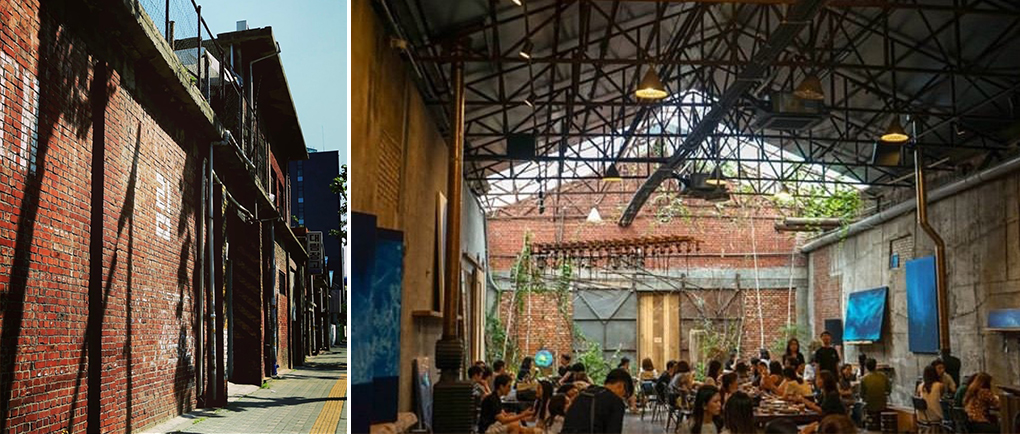
Opened in 2015, the industrial café, Daelim Warehouse / Source: Daelim Warehouse
My initial impression of Seongsu-dong was, frankly, ‘dirty.’ Streets lined with old warehouses, factories, and auto-repair shops presented a scene rarely seen in Seoul, far removed from any sense of cleanliness or sophistication. The Daelim Warehouse, an industrial café, stood out as a symbol of the beginning of Seongsu’s commercial district. It was a large building, once an old factory warehouse, with its exterior nonchalantly preserved while the interior was renovated into a café. The café, oddly situated within an old factory building, felt ‘different.’ It was new. The dirtiness even seemed like a feature. That was the charm of Seongsu-dong. It held a genuine story of the neighborhood, raw yet somehow sophisticated, not mainstream but uniquely minor — a personal sentiment. If the distinctiveness unseen in existing stores is what defines the allure of pop-up stores, then perhaps Seongsu-dong has been showing potential as a pop-up mecca from this point.
2 Fashionistas and the Hip Crowd of Yeonmujang Street
The affordable rent and the spaciousness of Seongsu-dong’s old factory buildings, suitable even for offices, presented an excellent alternative for young entrepreneurs and artists eager to infuse their unique sensibility into their ventures. Centered around Yeonmujang Street, cafes, restaurants, and galleries began to proliferate. Many entertainment companies, too, migrated here, weary of Gangnam’s soaring rents, bringing with them a wave of unique fashion boutiques. ‘Hip’ seems the most fitting descriptor for Seongsu’s fashion-forward individuals, who turn even ruggedness into a statement of style. Millennials and Gen Z have willingly set aside time to consume the hip essence of Seongsu-dong. With the entrance of cultural complexes and large flagship stores like ADERERROR, Peaches D8NE, and LCDC and a subsequent surge in foot traffic, Seongsu-dong rapidly emerged as an unignorable market for targeting the Millennials and Gen Z. This was the juncture at which brand pop-ups began to increase at an alarming rate. Fortunately, Seongsu-dong was not short of industrial cafes capable of showcasing brands on a grand scale, perfect for housing large installations and content.
3 From a Hip Neighborhood to a Luxury Pop-Up Mecca
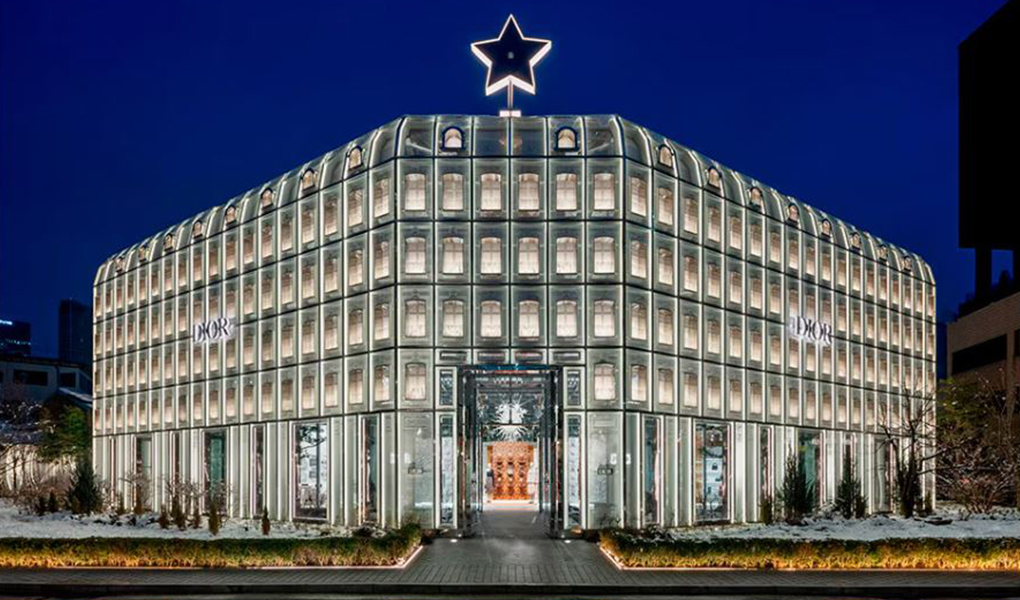
Dior Seongsu / Source: Dior
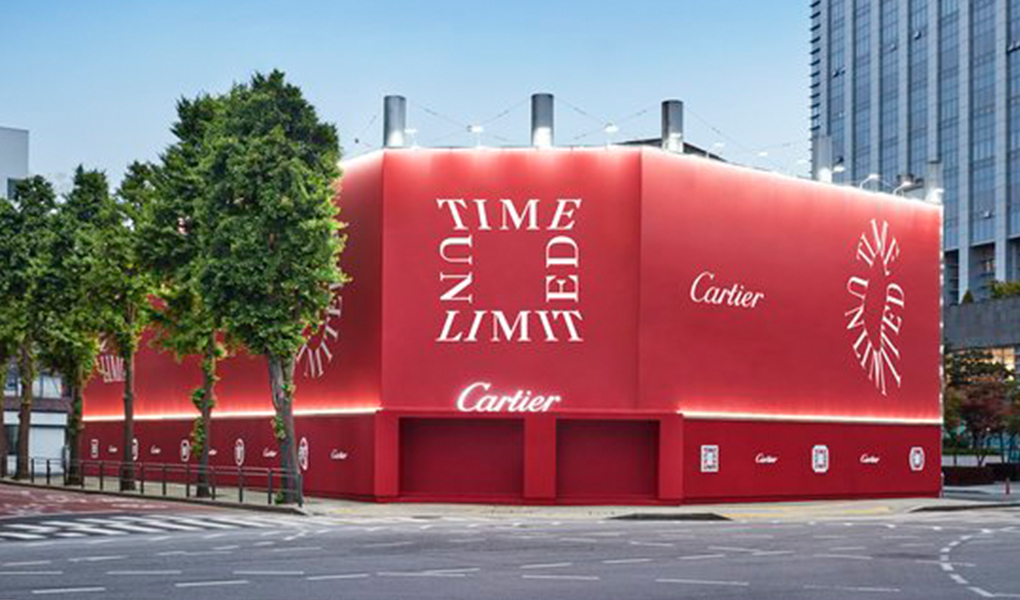
The first-ever solo exhibition of Cartier watches in a Seongsu-dong pop-up store (June 1 to 18, 2023)
/ Source: Cartier
Yet, ‘Dior’ in Seongsu? I vividly remember the shock I felt upon stumbling across the construction site of ‘Dior Seongsu.’ (Though now gone, the site across from Amorepacific Seongsu at that time was still a junkyard heaped with dirty waste!) In 2022, luxury brand Dior opened its second flagship store in Korea, ‘Dior Seongsu,’ in Seongsu-dong. Spanning 7,500 square feet, the store featured a large star atop its roof and dozens of window displays, a stark departure from Gangnam’s typical clean-cut luxury streets. Notably, Dior Seongsu was not a short-term pop-up but a permanent flagship store, a rarity in itself. However, considering the rapidly growing purchasing power of the 2030 age group in the luxury market, this move was quite natural. After all, online luxury purchases by those in their 20s had grown by 80%, and those in their 30s by 75%, compared to the previous year. To increase touchpoints with the Millennials and Gen Z, not only Dior but also other high-end luxury brands like Cartier, Louis Vuitton, and Chanel have launched pop-ups in Seongsu-dong. The scale of these pop-ups has only grown larger. For example, the ‘Burberry Rose’ pop-up in October last year rented out no less than four buildings along Yeonmujang Street, showcasing its considerable size.
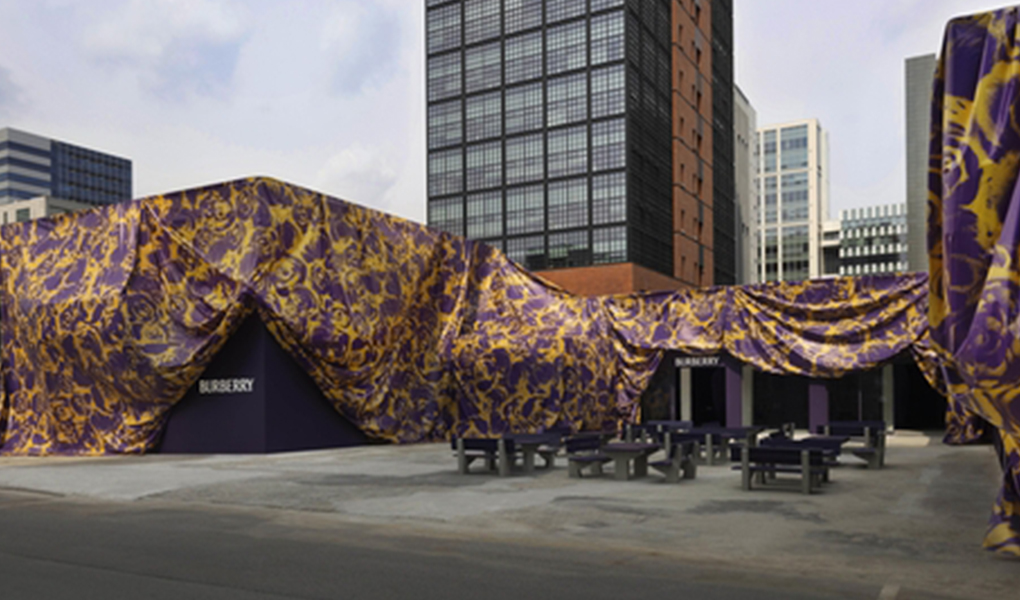
Seongsu-dong Burberry pop-up, ‘Burberry Seongsu Rose’, utilized this building and two others / Source: Burberry
4 Spaces Dedicated to Pop-Ups: #ProjectRent #Scène

Always bustling with new pop-ups, Project Rent & Café Scène
/ Source: Project Rent, Scène
In Seongsu-dong, the business of renting spaces specifically for pop-ups has become highly sophisticated. Project Rent offers a 250-square-feet space dedicated solely to pop-ups, allowing small brands to showcase their products for their desired duration. Far from merely providing a space, Filament Co., the operators behind Project Rent, collaborate with these brands to design intriguing pop-up stores. The business has flourished, and Project Rent has expanded from its initial location next to Ttukseom Station, R01, to operate a total of five spaces within Seongsu-dong: R01, R02, R03, R04, and R06. Furthermore, they’ve ventured into R OLDTOWN, a sizeable rental studio encompassing a 1,500-square-feet basement, a 1,800-square-feet ground floor, and a 1,600-square-feet second floor. The large café Scène in Seongsu-dong, which transforms into a different brand’s pop-up store nearly every month, provides quantitative metrics to the brands post-pop-up. Data gathered by AI cameras installed within the space offer insights beyond mere visitor counts, detailing visitor demographics such as gender, age, and even duration of stay. These metrics allow brands to gauge whether their content has effectively reached their targeted audience and direction.
5 Seongsu-dong Now: #HeadquartersCompetition #Musinsa #GentleMonster #Krafton
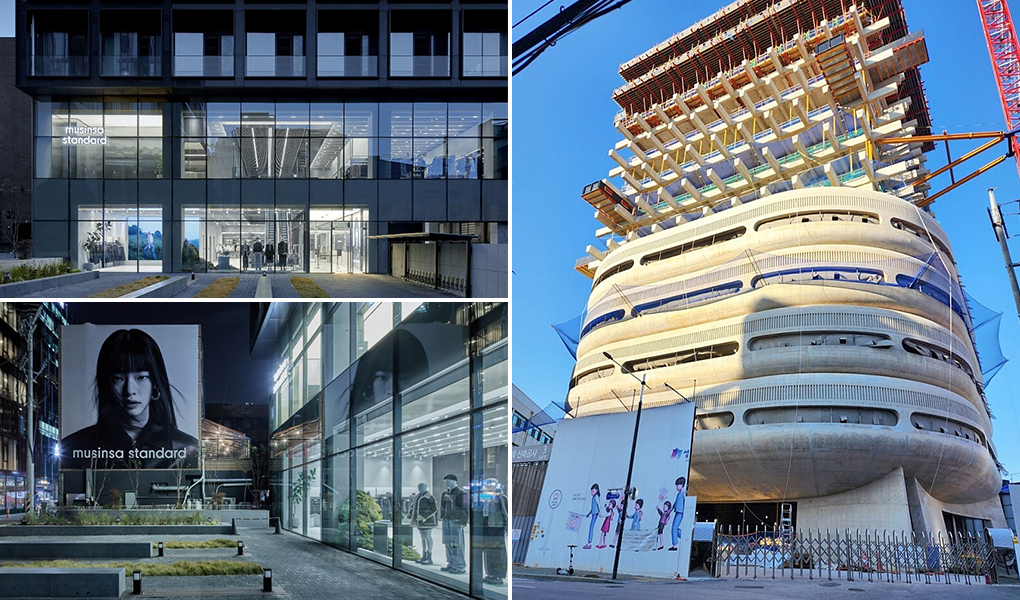
Musinsa Standard Seongsu / The Gentle Monster headquarters, scheduled for completion in 2025
Given these circumstances, Seongsu-dong has evolved beyond a neighborhood offering cheap spaces for pop-ups. Indeed, buildings on Yeonmujang Street now command weekly rental fees exceeding 100 million won for pop-ups. However, brands that quickly recognized the value of Seongsu-dong have been reaping the benefits of owning property there. Through reconstruction or remodeling, they’ve turned these buildings into offices doubling as flagship spaces. Musinsa is a prime example, owning five properties in Seongsu-dong beyond ‘Musinsa Campus E1.’ IICOMBINED, which owns Gentle Monster, NUDAKE, and Tamburins, is also preparing to communicate its brand from a uniquely designed headquarters in Seongsu-dong. Considering Seongsu-dong as the optimal location for pop-up and flagship marketing targeting the Millennials and Gen Z, acquiring buildings to reduce the cost of offline store operations while effectively promoting the brand seems a very strategic approach, even excluding the exponential rise in real estate values.
#OUTRO
이It’s uncertain how long this boom in Seongsu-dong will last. After all, the once bustling Garosu-gil also faced its downturn with gentrification. Personally, however, I believe Seongsu-dong’s traffic will remain robust for quite some time as it becomes the gathering place for the headquarters of trendy companies. Yet, paradoxically, this may intensify the competition among pop-ups for a while longer. Amid the deluge of pop-ups, it’s become less about the fact of doing a pop-up in ‘Seongsu-dong’ and more about ‘what kind’ and ‘how novel’ the pop-up is.
(So, in Part 2, we’ll analyze the pop-ups popular with the Millennials and Gen Z~! Stay tuned.)
-
Like
6 -
Recommend
1 -
Thumbs up
1 -
Supporting
1 -
Want follow-up article
4



